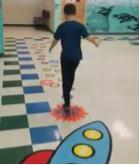- GLOBAL CONCEPTS CHARTER SCHOOL
- Special Education
Student Support Services
Page Navigation
Special Education
-
Global Concepts Charter School will educate students with disabilities in the least restrictive environment, with their non-disabled peers, as allowed by their Individual Education Plan (IEP). Individual Education Plans are developed in cooperation with the Committee on Special Education (CSE) of the students’ school district of residence. Highly qualified and certified special education teachers will provide consultant teacher services and resource room services as indicated on Individual Education Plans.
How is special education defined in New York State?
Special education means specially designed individualized or group instruction or special services or programs and special transportation, provided at no cost to the parent, to meet the unique needs of students with disabilities.What is specially designed instruction?
Specially designed instruction means adapting, as appropriate to the needs of an eligible student, the content, methodology, or delivery of instruction to address the unique needs that result from the student's disability; and to ensure access of the student to the general curriculum, so that he or she can meet the educational standards that apply to all students.
SPECIAL EDUCATION PROGRAMS AT GLOBAL CONCEPTS CHARTER SCHOOL
Consultant Teaching (CT)
- pushes directly into the general education classroom to provide specially designed instruction
- helps keeps students on task
- makes needed modifications to classroom assignments
Resource Room (RR)- supplements regular classroom instruction
- provides direct specialized instruction
- instruction targets specific deficits as noted in the students Annual Goals
Related Services
Related Service providers deliver services in an individual or group setting in:
- Speech Therapy
- Occupational Therapy
- Physical Therapy
- Social/Emotional Counseling
Students who experience sensory processing issues are identified for sessions in our Sensory Room or our Sensory Path.




-

Top 10 Frequently Asked Questions & Answers about Section 504
1.) What is Section 504?
Section 504 of the Rehabilitation Act of 1973 is an anti-discriminatory, civil rights statute developed in 1973. It prohibits the discrimination of students with disabilities in any program/activity that receives federal funding. Section 504 requires that the needs of these students with disabilities are met under reasonable accommodations.2.) What is a 504 Plan?
A 504 plan is an individualized plan created by a committee in which the student’s disability and needs are identified. In addition, the accommodations that will be set forth by the school to meet the student’s needs are specifically outlined in the 504 plan.3.) How does a 504 plan differ from an IEP?
While both plans are written individualized plans, they differ in the purpose they serve. A 504 plan is developed for students who require only reasonable accommodations within the school environment. An IEP is developed for students who require specialized instruction in the case that reasonable accommodations to not sufficiently benefit the student.4.) Who can refer a child for consideration for evaluation under Section 504?
Anyone: Teachers, doctors, or parents. However, “the school district must also have reason to believe that the child is in need of services under Section 504 due to a disability.” (www.greatschools.org) Parents must be given notice before their child is evaluated/placed under Section 504.5.) How is a 504 plan created?
Identification: Educators have a legal duty to recognize students with disabilities. Doctors and parents can also request an evaluation or the implementation of an accommodation. Not all accommodations require an evaluation to be implemented. Intervention: Educator implements strategies aimed to aid the student and documents results/concerns. Referral to 504 Coordinator: Educator refers student if the interventions did not work, or if the concerns remain. Review by 504 Committee: 504 team reviews and considers documentation (teacher’s reports, notes from doctors/agencies, grades, discipline reports, health/attendance records etc.), assigns additional accommodations and/or interventions and monitors for effectiveness.6.) How often is a 504 plan updated?
After the 504 plan is initially put in place, the accommodations should immediately be applied. There are no set time lines for which the committee needs to meet on a yearly basis. The committee must meet to reevaluate the student every three years or whenever significant adjustments are made to the plan. As a parent, you have the right to request a committee meeting at any time.7.) What should I bring to meetings?
As the parent, it is important to attend your child’s 504 meetings prepared. Start a file containing a copy of your child’s current 504 plan, most recent evaluations, report cards, doctor's notes and whatever else you would like to have the committee review and consider. Be sure that all paper work is updated and correct.8.) When going to a meeting, what do I need to know? What questions should I ask?
Before heading to a meeting, know the people attending the meeting, the purpose of the meeting, and the issues you want to discuss. Ask that your doctor’s notes and any updated information be recorded in the summary of the meeting. Be sure you know what the next step is before you leave the meeting. If you do not understand, ask for clarification. The committee is there to support you and your child.9.) What do I tell my child? How do I include him/her?
Your child will more likely thrive under Section 504 if they understand that their 504 plan is a plan for success. It is put in place to help them achieve, not to hinder them or make them stand out. It should be a plan that the child “owns”: guide them in self-reflection of the progress they have made and listen to their personal needs and goals. One of the most important things you can do for your child is to empower them to be a self-advocate.10.) Who do I contact if I have a problem?
There are steps to take when you suspect a 504 violation, noncompliance, or have a question about the process. 1. Talk to the teacher- Try to work things out directly with the teacher first, as he/she is usually the one responsible for implementing the accommodations. 2. Talk to the principal- If the teacher is unwilling or unable to provide accommodations, make a specific request to the principal for what is needed. 3. Talk to the 504 coordinator– If both the teacher and principal are unwilling or unable to execute the plan, contact the school’s 504 officer. The plan may need to be amended so that it is workable, or it may need to be more strongly enforced. 4. Talk to the state parent advocacy center- Other parent advocates with experience can help find answers to your questions. 5. Contact the U.S. Dept. of Education Office of Civil Rights– If you feel further enforcement is needed, contact the U.S. Dept. of Education.

